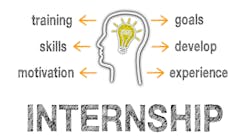Creating a lean culture is a tremendous challenge. Few companies and their leaders see the full potential of lean to transform their business. Most people see it as some sort of manufacturing approach and typically use it as one small component of their overall strategy. Several companies perceive lean as a bunch of tools that can be used selectively to improve a process.
In most situations, lean tends to get delegated down to the operation teams and is focused on cost reductions. This decreases its effectiveness. It also helps explain why only 5% of the companies that attempt to implement lean do so successfully. They are doomed before they get started due to the fact they use lean only operationally and somewhat tactically instead of as a strategic weapon.
According to well-known lean expert Art Byrne, in order for lean to be successful, you have to understand and commit to three management principles that will serve as the foundation on which your transformation should be built:
- Lean is the strategy.
- Lead from the top.
- Transform the people.
A Transformation like No Other
Implementing lean is the most strategic thing any company can do to transform its business and create a culture of continuous improvement. Regardless of whether you are in healthcare, retail, or logistics, lean will transform your organization like nothing you've ever seen before. Using lean to improve all your processes will overwhelmingly boost your ability to execute on what you currently consider to be strategic initiatives. It will help you to achieve lower costs and better quality, shorten lead times, better customer service, and free up both space and cash to reinvest for future growth.
Converting to a lean strategy doesn't mean you have to give up on doing all the things you've generally thought of as strategy. You can still try to develop new products and services, enter new markets, and improve your quality. The difference is that using lean will allow you to execute these actions much quicker. You will have the competitive advantage.
Any company attempting to implement lean will face an enormous amount of resistance from people at all levels throughout the organization. This is the number one reason why lean has to be led from the top and must not be delegated down. With the absence of strong leadership commitment and involvement, your efforts will come to a halt and will not be sustained. It will take years before you can even feel like you are on the right track to success.
The leadership team must lead by example in order to change the mindset of everyone else in the organization. "People don't do what you say, they do what you do.” That is why is it extremely important to model the behavior that you expect. The leaders have to be on the floor actively participating in the kaizen (continuous improvement) events on a frequent basis.
Empowerment to the People
The most important asset in any company—especially one that is attempting to create a lean culture—is its people. In a lean environment, the best ideas will always come from the people who do the work. I like to reference the inverted pyramid example, in which you put the CEO at the bottom and your frontline associates at the top. That is what I call employee empowerment.
I know most companies do not intentionally try to use less human capital than they have at their disposal. However, the traditional command-and-control management approach has a tendency to inadvertently do exactly that. The constant focus on "making the month” doesn't leave a lot of time for employee suggestions. Quite often, when the employees do make suggestions, the management team tends to ignore them or take much too long to even respond.
In a lean company, this element of underutilizing your people is reversed. When you are truly creating a lean culture, you are transforming the way your people think and behave. The lean focus on removing waste creates a learning environment for everyone. It leads to great teamwork, which increases employee morale and generates better performance. The best way to transform your people is through kaizen.
A Recipe for Success
In summary, leveraging lean to drive your business can be achieved by following a very simple recipe. You have to improve all the processes across your company so that you can vastly improve the way value is added. Doing so will increase not only your market share, but it will also increase your enterprise value. You can only get this benefit by using lean as your strategy, which means it has to be the fundamental core of everything you do. This is the only way to be successful.
As a leader, the change cannot be delegated to others; it has to be led from the top. It is not about transforming the physical aspects of your company (i.e., the 20%), but rather about transforming your most important asset—your people (the 80%).
In all my time doing continuous improvement, I have found that the best ideas come from the people doing the work, not from me. Treat your people with dignity and the utmost respect. Cherish their ideas and constantly recognize and reward them. Lean should be embedded in everything you do—from the way you design solutions for your clients, operate your business, and continuously improve to increase shareholder value.
Will Johnson is group director of supply chain excellence for Ryder System Inc. (www.ryder.com), a provider of commercial transportation, logistics and supply chain management solutions.



